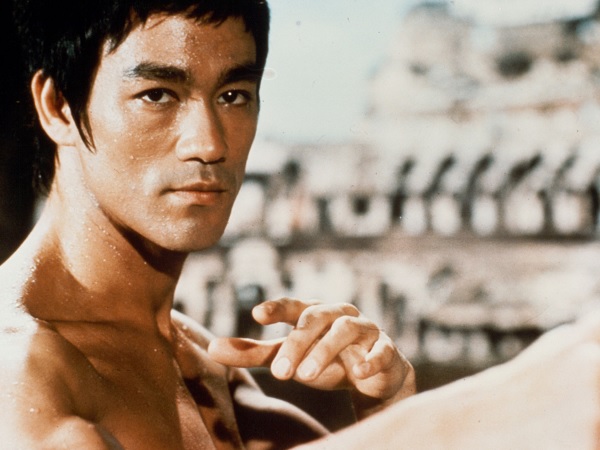After impressing the audience at a Long Beach martial arts tournament, Lee got a role in this campy TV show. He demanded that the producers humanize his character, and his insistence on a more realistic approach to mortal combat resulted in some of cinema’s most celebrated fight scenes.
Lee died suddenly in 1973, a few days before his film was due to debut in Hollywood.
The Orphan (1960)
At the time this film was released, The Green Hornet premiered and Bruce Lee started to get noticed in America. This was the beginning of a long and winding journey towards becoming a martial arts icon that would transcend the confines of traditional Hong Kong films.
Despite being typecast as a wily street urchin in this Cantonese tearjerker, the young Bruce Lee still manages to shine as Ah Sam, a petty thief modeled after Oliver Twist. He also attempts to broaden his range by attempting to play against type as a dutiful son in this family drama. His efforts are not quite successful, however, and critics panned this effort at self-reflection.
Despite its low critical acclaim, The Orphan helped introduce kung fu to mainstream America in the same way that the films of John Travolta and Sylvester Stallone did for disco and boxing respectively. This film also gave audiences a glimpse of the physical grace and power that would become synonymous with the name Bruce Lee.
The Green Hornet (1966-1967)
A young and brash Bruce Lee makes his way to Hollywood after impressing agent Garner with a devastating display of martial arts expertise in the movie The Big Boss (1971). He scores a series of guest appearances as a blind private eye and kung fu instructor, most notably on the TV show Longstreet.
While this was far from a commercial success, it did introduce the Green Hornet to American audiences and showcase Lee’s martial arts abilities. This would help set the stage for future successes.
The Green Hornet starred Van Williams as Britt Reid, owner of the Daily Sentinel and the masked fighting hero known as the Green Hornet; he’s assisted by his partner, Kato (Bruce Lee). The film used a combination of lookalikes and stunt doubles to create the scenes involving Lee; his actual footage was cut down to a few minutes in the final product.
The Big Boss (1971)
One of the first kung fu movies to popularize the genre, The Big Boss marked a major turning point for the style. Ahead of its time, this movie is praised for being the first to shift away from sword-fighting-oriented wuxia films to more action-packed unarmed combat. It also introduced leaps-in-the air stunts made possible by trampoline.
This family drama features Lee as a cousin who moves in with relatives working at an ice factory and soon discovers that the operation is a cover for drug smuggling. The film carries a bit more socially conscious themes than most of Lee’s movies and his performance as a thoughtful son is his best to date.
The Big Boss contains a fair amount of bare hand fighting with some bloody results. It is arguably Lee’s bloodiest film. Interestingly, the movie also features multiple music scores unlike Fist of Fury, Way of the Dragon and Enter the Dragon.
Fist of Fury (1972)
By now, the kung fu dynamo had side-kicked his way into American popular culture. Warner Bros financed this film, which features Lee as Wong Yin, a detective who takes down the island fortress gang with his lightning-fast reflexes and unique martial-arts philosophy. The movie’s bigger budget enables more spectacular choreography—the last fight in the Japanese garden is especially mesmerizing.
While this film isn’t one of the best, it is a welcome showcase for Lee to demonstrate his natural charisma and effortless screen presence. This is a more complex performance, and the story is a bit less deathly simple than The Big Boss. Lee also gets the chance to show off some impressive stunt work.
Enter the Dragon (1972)
The first film to be released after Lee’s death, Enter the Dragon was a triumph despite being made on a very slim budget. It became one of the most profitable movies in history and set a new standard for martial arts films.
In the opening scene, clad in black, lissom and lightning fast, Bruce Lee cuts an instantly iconic figure. He and his opponent then duke it out in a fierce but friendly duel that sets the tone for the rest of the film.
Sadly, the production of this film was cut short by Lee’s death in early 1973. But director Robert Clouse was able to complete the movie by reworking the existing footage with newly filmed scenes featuring stand-ins. The result is a classic that has stood the test of time. Its influence was felt outside of the cinema world too; the Wu-Tang clan name their debut album in honor of this film.
Game of Death (1973)
Despite its low budget and James Bond-esque plot, Game of Death became the high-water mark in Bruce Lee’s filmography. The two hours of watching him punch and kick dozens of bad guys inspired millions of Western kids to take up the martial arts.
Although the plot is a bit hokey, Game of Death has an excellent set piece where Lee climbs up a tower to fight a series of progressively bigger opponents, including real-life training partner Dan Inosanto and NBA player Kareem Abdul-Jabbar. Then there’s the final showdown between Lee and a cat-stroking villain, where the diminutive hero is dwarfed by his opponent and has to use all of his skill to defeat him.
This eccentrically entertaining kung fu curio, released five years after Lee’s death, combines footage from the unfinished Game of Death with original material from Enter the Dragon director Robert Clouse. It also features the iconic yellow jumpsuit that would be used in Quentin Tarantino’s Kill Bill.

